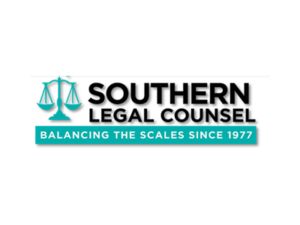NCLR Legal Director, Shannon Minter, Delivers Captivating Oral Argument On Behalf of 12 Same-
Sex Couples In California Marriage Equality Case In Which NCLR Is Lead Counsel
(San Francisco, CA, December 22, 2004) — The National Center for Lesbian Rights’ Legal Director, Shannon Minter, argued on behalf of petitioners Lancy Woo and Cristy Chung and eleven other couples, many of whom are in the courtroom today, as well as Equality California and Our Family Coalition. With me is my colleague Mr. Steve Bomse from Heller Ehrman and my colleague Courtney Joslin from NCLR. Your Honor, the Woo couples are before this Court seeking nothing more and nothing less than the same opportunities enjoyed by others – the right to marry the person of their choice, to take on the rights and responsibilities to care for one another, to provide security for their children, and to express their love and commitment. These couples have been together between four, and in the case of Del Martin and Phyllis Lyon, 52 years. Myra Beals and Ida Matson, who are here in the courtroom today, have been together twenty-eight years. Stuart Gaffney and John Lewis have been together seventeen years. These couples work; they pay taxes; they volunteer in their communities. Several, including Lancy and Cristy, Karen and Jody, Alexis and Rachel, Pali and Jeanne, are raising children. Some, like Del and Phyllis and Myra and Ida, are retired; all are growing older. Some, including Corey and Andre, and Jewelle and Diane, have cared for one another through serious illness and disability. These couples have done everything within their power to care and provide for one another and their families, but because the State of California prevents them from marrying one another, they are made much more vulnerable. They do not have, and under the current law cannot ever gain, the same security that is readily available to non-gay people in this State. The impact of this exclusion on these couples is very real. Because California will not let them marry, they have no basis to claim any of the estimated 1,138 federal benefits and protections given only to spouses. They have no security that their relationships will be respected or even understood if they travel or move out of state. And even after the new domestic partnership law goes into full effect on January 1, they still will not be treated equally even under California law. For Del and Phyllis, this means that they are at risk of losing their home, where they have lived together for the past 25 years, if either partner has to go into a nursing home or assisted care, whereas if they were married, they would be fully protected from this risk. For Lancy and Cristy, it means that they lose thousands of dollars every year, because they are denied the tax protections given to married couples when one spouse works and the other stays home to care for a child.
In addition to being deprived of these vital legal protections, the marriage ban subjects same-sex couples to the daily indignity of being officially relegated to a separate and, as the Attorney General concedes, inferior legal status. There are a myriad of circumstances where a heterosexual person simply may say, “this is my spouse,” such as dealing with insurance agents, health care providers or businesses, and be assured that his or her relationship will be understood. In contrast, same-sex couples constantly must explain the legal significance of their relationship, and constantly must fight even for a measure of the recognition and respect that is given as a matter of course to spouses. By excluding same-sex couples from marriage, the State stigmatizes their relationships and thereby encourages private discrimination as well. This situation makes it much more difficult for same-sex couples even within their own extended families. As Stuart stated in his declaration, even though he and John have been together for more than seventeen years, “No member of our family has ever congratulated us for becoming domestic partners.” In her declaration, Lancy Woo likewise explained that “There’s no traditional Chinese ritual or language for acknowledging domestic partnerships. That concept is foreign to many of my relatives. . . . They know only marriage.” The marriage ban sends a particularly negative message to children that their families are less valued. In the words of Erika, Jody and Karen’s fourteen year old daughter, “It’s hard for me knowing that the law treats my family differently than other families.” In sum, even if domestic partnership could provide all of the specific rights and benefits of marriage, which it is far from doing, creating a separate class for lesbian and gay couples necessarily sends the message that their relationships are less valuable and less deserving of respect. As the high court in Massachusetts held in Goodridge, “the history of this country has shown that separate is seldom, if ever, equal,” and that is also true in California.
The Woo couples challenge the marriage ban exclusively under the California Constitution, and specifically under its guarantees of due process, privacy, equal protection, and free expression. At least since 1948, when the California Supreme Court became the first in the country to strike down a law prohibiting interracial marriage, it has been clear that in California, the right to marry is fundamental, that it is one of the most basic civil rights, and that the very essence of the right is the freedom to marry the person of one’s choice. It also has been clear that laws infringing the right to marry “must be based upon more than prejudice.” The Woo couples simply argue that, like the prohibition in Perez, the current marriage ban in Family Code 300 prevents them from marrying the person of their choice and thus must be subject to heightened scrutiny.
According to the Attorney General, however, same-sex couples do not have a fundamental right to marry for no other reason than because the State has excluded them from marriage in the past. But that argument is merely a restatement of the very issue before the court. It is circular reasoning, not analysis, to maintain that marriage must be limited only to heterosexual couples merely because it has been so limited in the past.
And even if the State’s argument might have had some credibility a hundred years ago or perhaps even twenty years ago, the assertion that marriage is inherently or by definition heterosexual can no longer be maintained now that a growing number of jurisdictions permit same-sex couples to marry, including Massachusetts, the Netherlands, Belgium, Canada, most recently, South Africa, and very soon to be included, Spain. As the courts and legislatures in these jurisdictions have concluded, there simply is nothing inherent in marriage that prevents same-sex couples from participating equally in it. The institution of marriage is rapidly evolving worldwide to include lesbian and gay people, just as it has evolved in the past to provide equality for married women, to encompass interracial marriages, and to provide for no-fault divorce. Accordingly, the State must rely on something other than circular reasoning – or a mere invocation of tradition — to justify its position. This is particularly so given that the State acknowledges, as it must, in light of AB 205, that lesbian and gay couples are similarly situated to heterosexual couples in their need for the rights and protections of marriage.
The Woo couples do not seek access to a new and different fundamental right of so-called “same-sex marriage” or “gay marriage,” any more than the petitioners in Perez or Loving sought a fundamental right to “interracial marriage” or the petitioners in Turner sought a fundamental right to “inmate marriage.” Rather, like the couples in those cases, the Woo couples seek the same right to participate in the same institution of marriage that is available to all other persons, and they do so, because like others who wish to marry, they love and cherish their partners, they wish to protect their families, they wish to participate equally in society, and, in the words of Justice Kennard, they wish “to obtain the public validation that only marriage can give.”
In addition to infringing the fundamental right to marry, the marriage ban discriminates on the basis of sexual orientation. As the California Supreme Court noted in Lockyer v. San Francisco, the very purpose of the ban, which was enacted in 1977, was to prohibit same-sex couples from being able to marry. By design, the statute permits all heterosexual individuals to marry the person of their choice and also by design, it excludes all lesbians and gay men from doing so. In the words of one contemporary supporter of that amendment, “it is about time that someone was brave enough to stand up and tell these people to get back in their closet. I resent these people calling themselves gay. God calls them abominations.” While not all support for the bill was this vitriolic, it is clear that the bill was intended to, and does in fact, exclude all lesbian and gay couples from any ability to marry.
The State argues that this discriminatory purpose is somehow neutralized because the amendment “was only intended to clarify long existing law.” As the 1977 amendment makes clear, however, California does not exclude same-sex couples from marriage merely through inadvertence or through an unthinking perpetuation of an old rule. Rather, in 1977, the Legislature deliberately considered the possibility that same-sex couples might seek the freedom to marry and deliberately chose to slam the door. As we have argued in our briefs, and I will not belabor the point here, we believe that classifications based on sexual orientation must be given some form of heightened scrutiny and that California courts, including the California Supreme Court in the Gay Law Students decision in 1979, have in fact applied heightened scrutiny in consistently striking down such classifications in prior cases. In fact, we are unaware of any decision that has ever upheld such a classification in this State. We hope Your Honor will agree that heightened scrutiny must be applied.
The marriage ban is also subject to heightened scrutiny because it discriminates on the basis of gender. Del Martin could marry Phyllis if Del were a man, but because she is a woman she cannot. Joshua could marry Timothy if Joshua was a woman, but because he is a man he cannot. But for their gender, each of the Petitioners could marry their chosen partners. Because the statute facially relies on gender to restrict marriage, that restriction can only be upheld if the State can show that it is necessary to achieve a compelling state interest. The State cannot do so here because, apart from the requirement that marriage must include a man and woman, every other gender-based distinction within marriage has been eliminated. With the exception of the restriction in Section 300, marriage is a completely gender-neutral institution, and there is nothing about either the purpose of marriage or the current legal institution of marriage that depends on a person’s gender.
Your Honor, we believe the marriage ban is subject to heightened scrutiny because it infringes a fundamental right and, independently, because it discriminates on the basis of sexual orientation and sex. Nonetheless, even if that was not the case, it clearly still would be unconstitutional. Even under rational basis review, a law that excludes an entire class of people from an important right must be subject to a more careful and searching review than a law that simply regulates the length of truck beds. As Justice Marshall noted in Cleburne, which struck down a law that discriminated against mentally retarded persons under rational basis review, “the formal label under which an equal protection claim is reviewed is less important than careful identification of the interest at stake and the extent to which society recognizes the classification as an invidious one.” Thus, even under rational basis review, the court must be cognizant of the tremendous importance of marriage to all people and of the long history of official discrimination against lesbians and gay men.
As courts in other states have held, there simply is no longer, if there ever was, an interest that possibly could justify the categorical exclusion of lesbian and gay couples from marriage under any standard of review. Even under rational basis, an interest asserted by the State must be plausible and must be related to the exclusion in some rational way. As I have already discussed, a mere invocation of history and tradition has never been sufficient to justify continued discrimination. It is not sufficient here. And as it must, the State has disavowed certain interests that have been asserted in some other states but that have no plausibility in California because they are so flatly inconsistent with the clear public policy of this State. For this reason, the arguments by the Campaign and the Fund about various purported state interests relating to procreation must be rejected. First, the State not only has declined to assert it, but has in fact expressly disavowed it. More important, a court may not rely on a purported justification that has been expressly rejected by the Legislature itself. In every way that it can, through all of its laws, policies, and practices relating to adoption, foster parenting, child custody, and parentage, the Legislature unambiguously has rejected the notion that families headed by same-sex couples provide a harmful or inferior environment for children. In light of that clear policy, any purported state interest in preferring heterosexual-parent families is clearly implausible.
In addition, Your Honor, the State cannot credibly argue that domestic partnership provides an adequate alternative to marriage. To decide that question, the Court need only consider whether heterosexual people in California would be satisfied if marriage was reserved for lesbian and gay couples and heterosexual couples were only provided with domestic partnerships. As Justice Scalia has observed, the guarantee of equality “requires the democratic majority to accept for themselves and their loved ones what they impose on you and me.”
In 1948, when Andrea Perez and Sylvester Davis brought a writ action to challenge California’s ban on interracial marriage, they had a lot against them. Not a single court at any level anywhere in the country had ever invalidated such a law. As the dissent noted, such laws had been in effect in this country since before our national independence and in California since our first legislative session in 1850. A majority of other states had similar laws, and several had gone so far as to amend their state constitutions to prohibit interracial marriages. In California, the law enjoyed strong, indeed overwhelming, popular support. Nonetheless, the court ruled in their favor, and looking back on the decision several decades later, any other result now seems inconceivable. In ruling on their claim, the Woo couples ask this Court to envision how the decision in this case may be seen in future years, by those similarly detached from the passions and prejudices of our day. We believe those future generations will recognize the inherent equality of lesbians and gay men, and will agree that striking laws that exclude them from marriage was the only constitutionally correct choice.
[click here to download the argument here]
The National Center for Lesbian Rights is a national legal organization committed to advancing the civil and human rights of lesbian, gay, bisexual, and transgender people and their families through litigation, public policy advocacy, and public education.









